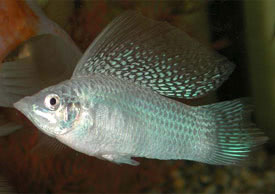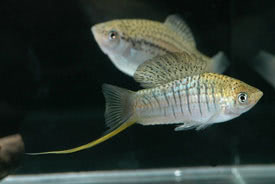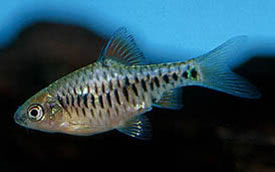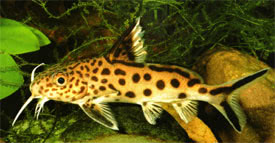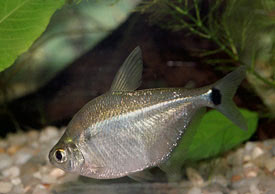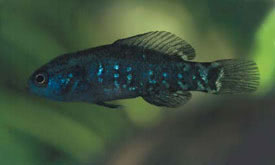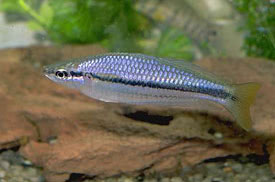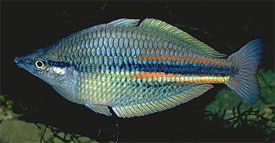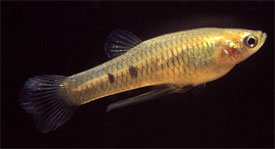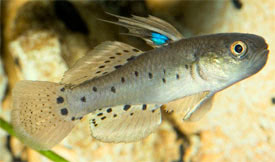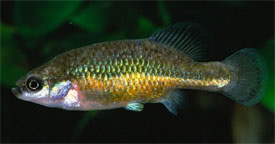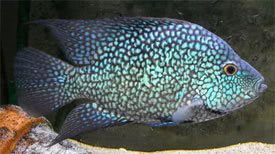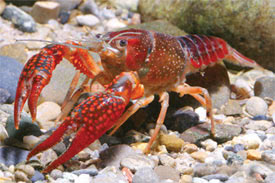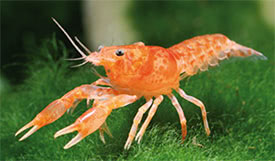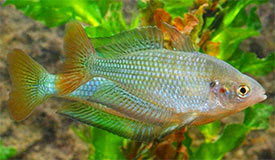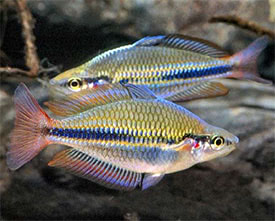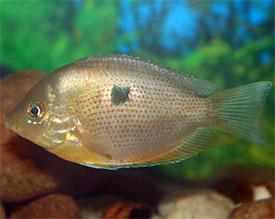
 Magyarul / Hungarian
Magyarul / Hungarian
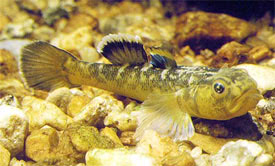
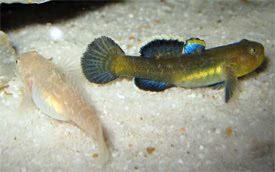
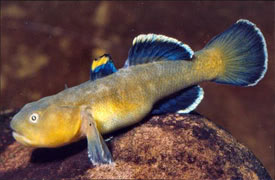
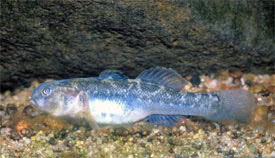
- Scientific name: Chlamydogobius eremius
- Synonyms: Gobius eremius
- Common name: Desert Goby
- Group: Other fishes
- Habitat: Australia; endemic to the Lake Eyre drainage basin
- Size: 5.5-6 cm
- Biotope: Found in shallow pools and streams associated with artesian springs preferring shaded areas around plants or rocks.
- Social behavior: Not an ideal community fish, it is best kept in a separated species tank. Males can be aggressive during spawning, they can even kill each other, so it’s important to provide many hiding places where subdominant or non-breeding individuals can seek shelter.
- Diet: Omnivorous; Not a fussy eater, it will accept dried foods, but for best color and condition it needs small live and frozen foods. Algae and some vegetable matter are also advisable.
- Breeding: Quite easy.
- Tank: Minimum 40 litres
- Population: 1 pair for 40 litres
- Decoration: Use sandy or fine-gravel substrate. Build rock structures to provide many hiding places, crevices and caves. They prefer shallow water.
- Temperature: 10-35 °C
- pH: 7-8
- Hardness: 9-19 NK°
- Lifespan: 1-2 years
Description: Lake Eyre is the lowest point in Australia, at approximately 15 m below sea level on the rare occasions that it fills, the largest lake in Australia. Desert Goby does not occur in the lake, since no fishes are able to survive there, instead of it inhabits isolated freshwater springs and flowing artesian wells. The fish can survive extreme fluctuations in temperature and salinity. Field observations and laboratory experimentation indicate that it can withstand wide ranges of temperature (5-41 °C), pH (6.8-11.0), salinity and very low dissolved oxygen level, by gulping air at the water surface.
Head and body of the Desert Goby is greyish-brown with 7-8 brown clearly defined saddles or highly marbled patches across the back. Dominant males have yellow to brownish body with blue, black, and white bands in the dorsal, caudal, anal and ventral fins. However they can change their color very quickly and may appear very similar to females, usually when stressed or in the presence of a dominant male. The fish can easily be sexed by examining the genital papillae, which in males is longer and more slender. Very poor swimmers these Gobies get around by hops. Chlamydogobius eremius has no swim bladder, and to remain in midwater it swims constantly in a headup fashion. As soon as it stops swimming it sinks back to the bottom.
Mature males have larger jaws and are much more colorful than females. Spawning generally occurs in caves and crevices, and the eggs are defended aggressively by the male until hatching. In nature they usually spawn between November and March, when the water levels are high, but in aquarium they will breed during the whole year. During the courtship when a female comes near his cave, the male tries to attract her into the cave by erecting his fins and wagging his whole body. A receptive female will enter the cave and deposit the 50-250 eggs on the roof. At this point the female should be removed. Incubation is temperature dependant, but typically occurs in 10-17 days. Once the eggs have hatched the male can also be removed. Newly hatched fry are around 0.5cm long and are large enough to eat newly hatched brine shrimp or similar sized live foods.








